Advertisements
Advertisements
प्रश्न
In figure, (a) and (b), F1 and F2 are the two foci of thin lenses and AB is the incident ray. Complete the diagram to show the path of the ray AB after refraction through each lens.
 |
| (a) |
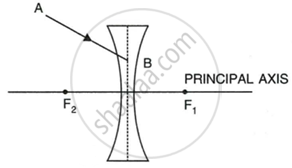 |
| (b) |
उत्तर
(a) Ray AB after refraction through convex lens takes the path as BC (parallel to the principal axis).
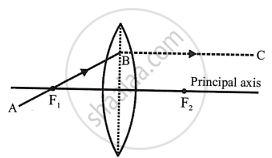
(b) Ray AB emerges parallel to the principal axis as BC after refraction.
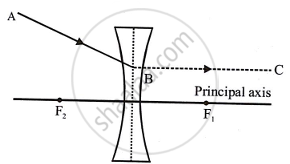
APPEARS IN
संबंधित प्रश्न
State the condition when a lens is called an equi-convex or equi-concave.
Distinguish between a real and a virtual image.
The diagram given below shows the position of an object OA in relation to a converging lens L whose foci are at F1 and F2.
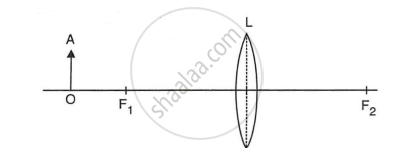
- Draw two rays to locate the position of the image.
- State the position of the image with reference to the lens.
- Describe three characteristics of the image.
- Describe how the distance of the image from the lens and its size change as the object is moved towards F1.
The diagram given below shows the position of an object OA in relation to a converging lens whose foci are at F1 and F2.

Describe three characteristic of the image.
A ray of light incident parallel to the principal axis of a lens, passes undeviated after refraction.
Fig shows an object PQ placed on the principle axis of a lens L. The two foci of the kens are F1 and f2. The image formed by the lens is erect, Virtual and dimnished.

(i) Draw the outline ofthe lens L used and Named it.
(ii) Draw a ray of light starting from Q and passing through O. show the same ray after refraction by the lens.
(iii) Draw another ray from Q Which is incident parallel to the principle axis and show how it emerges after refraction from the lens.
(iv) Locate the final image formed.
Fig. shows two rays of light Op and OQ coming from an object at the bottom of a pond, incident on the water surface.
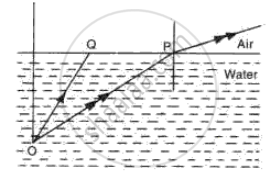
(a) Mark on the diagram
(i) The angle of incidence of ray OP,
(ii) The angle of refraction of ray Op,
(iii) The position of image of the object as seen from above.
(iv) An approximate path of the ray OQ.
(b) Explain, why do the rays of light change directions on passing from water to air.
(c) A fish in water sees everything outside the water by rays of light entering its eye in a small cone of light. Draw a diagram and explain how does this happen.
Name the subjective property of light related to its wavelength.
When does a ray of light falling on a lens pass through it undeviated?
Draw a ray diagram to show the image formed by a convex lens when the object is placed between F and 2F.
